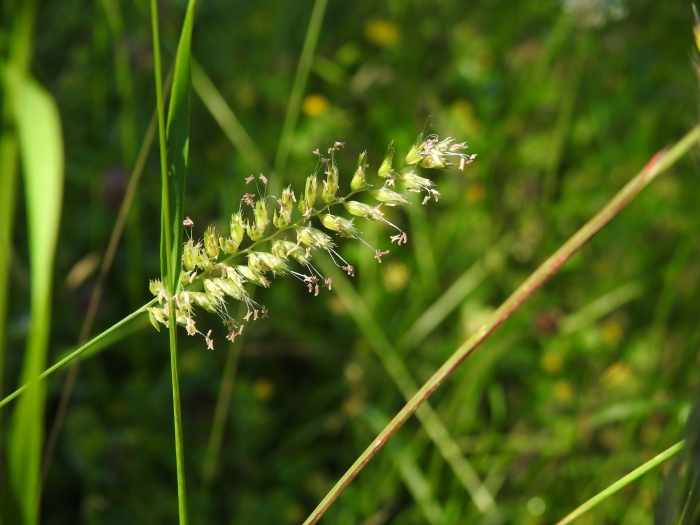Crested Dog’s-Tail
(Cynosurus cristatus)
Crested Dog’s-Tail (Cynosurus cristatus)
/
/

Yves Bas
CC BY 4.0
Image By:
Yves Bas
Recorded By:
Copyright:
CC BY 4.0
Copyright Notice:
Photo by: Yves Bas | License Type: CC BY 4.0 | License URL: http://creativecommons.org/licenses/by/4.0/ | Rights Holder: Yves Bas | Publisher: iNaturalist | Date Created: 2023-06-15T10:10:23-07:00 |
























Estimated Native Range
Summary
Cynosurus cristatus, commonly known as crested dog’s-tail, is a short-lived perennial grass native to a variety of habitats including species-rich grasslands, meadows, and pastures across Europe and West Asia. It has been introduced to North America, Australia, and New Zealand. This grass prefers well-drained soils and typically avoids extreme pH levels, thriving in neutral to slightly acidic conditions. Crested dog’s-tail forms dense tufts with slender stems that can reach heights of 6 to 18 inches. The leaves are fine-textured and the plant produces distinctive flower heads with a spiky, "crested" appearance during its flowering season in early summer.
Crested dog’s-tail is valued for its low maintenance and durability, making it a good choice for ornamental lawns and restoration projects in urban and rural settings. It is also used in traditional crafts such as straw plaiting. The grass is a food plant for the caterpillars of various butterfly species, contributing to biodiversity. In cultivation, it requires minimal care, tolerating a range of soil types as long as they are well-drained. It performs best in full sun to part shade and is relatively drought-tolerant once established. However, it is not suitable for heavily trafficked areas as it does not tolerate constant wear.CC BY-SA 4.0
Crested dog’s-tail is valued for its low maintenance and durability, making it a good choice for ornamental lawns and restoration projects in urban and rural settings. It is also used in traditional crafts such as straw plaiting. The grass is a food plant for the caterpillars of various butterfly species, contributing to biodiversity. In cultivation, it requires minimal care, tolerating a range of soil types as long as they are well-drained. It performs best in full sun to part shade and is relatively drought-tolerant once established. However, it is not suitable for heavily trafficked areas as it does not tolerate constant wear.CC BY-SA 4.0
Plant Description
- Plant Type: Grass
- Height: 1-2.5 feet
- Width: 1-2 feet
- Growth Rate: Slow, Moderate
- Flower Color: N/A
- Flowering Season: Spring, Summer
- Leaf Retention: Deciduous
Growth Requirements
- Sun: Full Sun
- Water: Medium
- Drainage: Medium, Fast
Common Uses
Deer Resistant, Erosion Control, Low Maintenance
Natural Habitat
native to a variety of habitats including species-rich grasslands, meadows, and pastures across Europe and West Asia
Other Names
Common Names: Crested Dogstail Grass, Dog’s Tail Grass, European Crested Dogstail
Scientific Names: , Cynosurus cristatus, Cynosurus creticus, Cynosurus creticus, Cynosurus cristatus f. ovatus, Cynosurus cristatus f. pratensis, Cynosurus cristatus f. tenuis, Cynosurus cristatus f. tenuissimus, Cynosurus cristatus var. ciliatus, Cynosurus cristatus var. coloratus
GBIF Accepted Name: